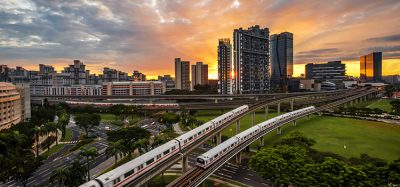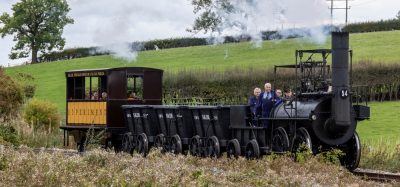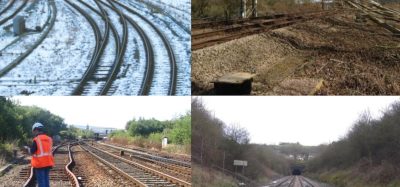Complete renewal of Danish railway signalling
Posted: 26 March 2009 | | No comments yet
Details of the programme to renew all Danish railway signalling before 2021, focussing on economies of scale and creating a competitive market situation to ensure best price and quality.
Details of the programme to renew all Danish railway signalling before 2021, focussing on economies of scale and creating a competitive market situation to ensure best price and quality.
In January 2009, the Danish parliament decided to fund a €3.2 billion replacement programme of renewing all Danish railway signalling before 2021. The programme is unique in its approach of focusing on economies of scale and creating a competitive market situation to ensure the best possible price and quality. The programme also introduces a step change in technology which maximises the possibilities and benefits of re-signalling the Danish railway network.
Background
Banedanmarks current signalling systems are aging to a point, where many of them have overrun their technical service life. This leads to an increase in errors and delays for passengers and a general decrease in the train traffic service level. The existing signalling systems generate approximately 39,000 delayed trains a year and account for approximately half of all the delays that Banedanmark, as infrastructure owner, are responsible for.
Around half of the signalling systems in use today are more than 50 years old. Most are based on technology from the 1950s and 1960s and some even on pre World War One technology. During the next 15 years, 60% of the assets’ life expires. If the assets are not replaced in due time before this, the number and severity of delays will increase, along with the risk of high profile breakdowns.
The idea of total replacement of all signalling equipment was generated because of the high average age of the signalling assets. A comparable study of different replacement strategies was undertaken in 2006. The study showed that the cost, risk and benefits of a total replacement was a better option for Banedanmark rather than other more traditional migration strategies. A principle political decision on reinvestment of the complete signalling system on the Banedanmark infrastructure was reached in October 2006.
Banedanmark then set up the Signalling Programme organisation and with the assistance of consultants (Rambøll (DK), Emch-Berger (CH) R+R Burger (CH) and Parsons (UK)), developed the project proposals for the total renewal within 2021 for all main and regional lines and before 2020 for the Copenhagen S-bane. The project proposals were released on 10 December 2008 and a final political funding approval was reached in February 2009.
The proposal for the main and regional lines is a total replacement with signalling based on ERTMS Level 2. For the Copenhagen S-bane, a commercial mass-transit signalling system of the kind being deployed at modern metros is proposed. A CBTC type system has been envisaged.
The passengers will experience higher punctuality, higher line speed, shorter journey times on some lines, a homogenous high safety level and much better passenger information. Banedanmark will have a better basis for developing the railway and substantial savings in costs of both operations and maintenance.
Signalling Strategy
Banedanmark’s ‘Signalling Strategy’ is targeted at a complete replacement of all the ageing signalling systems based on an optimised delivery and operations approach. The aim is to achieve reductions in life cycle costs while at the same time improving the performance of the signalling system.
This ‘Signalling Strategy’ is formed by a number of ideas, including:
- The basic idea is to replace all conventional network equipment with ERTMS Level 2 based cab signalling and to replace all signalling on the Copenhagen S-train network with a suitable metro/urban railway signalling system
- Total replacement means total replacement. All existing equipment is replaced no matter the age or technology
- The procurement will be based on functional requirements focusing on safety, performance and life cycle costs of the signalling infrastructure
- To use European railway and industrial standards where possible
- Development of a complete new set of operational rules for the conventional network according to TSI-OPE. Also, to develop a new set of operational rules for the S-train network, e.g. by adopting an existing and proven set of rules from other metro/urban railway systems
- Realising that today no international signalling or interlocking standard exists, lower unit prices are best obtained by tendering out the replacement of all signalling on the conventional network in two major contracts for the mainline, one framework contract for onboard equipment and the S-train network as one contract
- Tendering out the total replacement results in additional advantages: Competition between all major signalling players as all requirements are new and high level. Equipment and interface problems between components will diminish as one supplier delivers a full signalling package, the benefit of having only one safety approval per contract and design & development costs will represent a low proportion of the investment
- By a well planned but swift roll out, a number of benefits will be obtained: minimising the disruption during implementation, obtaining a beneficial learning curve by repetitive similar installations, and not least a quicker ‘pay-back’ in terms of benefits
- Procuring a few major contracts will be combined with a performance type contract where the supplier delivers technical operation and maintenance for a number of years governed by a set of performance indicators. The performance type contracts are considered a means to secure the efficient delivery of the new system as well as a cheaper and more efficient maintenance regime
The technical solutions presented represent the current status from the project proposals. Any specific technological solutions as well as specific roll-out dates are subject to change during the following tender and contract negotiations as suppliers present their solutions and migration experiences.
Scope of renewal
The renewal addresses the Copenhagen S-train network and the conventional railway network in Denmark – excluding local county owned lines. For the local lines, a ‘signalling price book’ has been developed, enabling politicians and local decision takers to consider the options for renewing the signalling on these lines also.
The Fehmarn Belt fixed link has been included in the migration plans on the basis of the signed treaty between Germany and Denmark on building the fixed link.
The Danish network
The existing Danish railway system is equipped with traditional signalling equipment i.e. colour light signalling, train detection by means of track circuits, and points operated by electric point machines. The mainline and regional network is operated from three larger regional control centres and 11 smaller control centres. One larger modern control centre manages the operation of the Copenhagen S-train network.
All signalling to the driver is provided through colour light signals as described in the Danish rule book SR75, which like most national rule books, is a specific set of Danish rules iteratively developed over a period of almost 100 years.
The Banedanmark network includes 2,132km of lines and 3,240km of tracks. It serves approximately 700 train sets and locomotives from three major operators DSB, Railion and Arriva.
Interlockings
Each station is controlled by a station interlocking. There are five generic models of interlockings, which are:
- Few electromechanical interlockings, from around 1950 (types dates back to 1912)
- 50% are relay-based interlockings dating from 1950 to the mid 1960s
- 25% are relay groups, where the relays are grouped into units on the basis of a separate unit for each point or signal dating from mid 1960 to the 1970s
- 15% computer based interlockings dating from the period between 1970 to 2000
- A small number of PLC based interlockings introduced in 2004 for small stations
Traffic
The Danish railway network is a conventional railway with mixed traffic, dominated by intercity and commuter traffic around Copenhagen and the Regional centres in Jutland and Funen.
Passenger traffic is currently at 1,400 intercity and commuter trains daily. The Copenhagen area S-train system runs 1,100 trains daily.
Freight is dominated by international trains between Sweden and Germany corresponding to the northern part of Corridor B (Stockholm-Hamburg/Maaschen). Freight trains accounts for 170 trains daily (11% of the trains).
Automatic Train Protection (ATP)
Cab signalled train protection is mandatory for train speeds 120km/h and above, and Danish ATP (Siemens ZUB123) is installed on almost all mainlines, and high density regional lines. Danish ATP is capacity optimised by use of infill loops at 30% of the signals. On some regional lines with train speeds 120km/h or lower, a scaled down version without cab signalling is used. All Danish mainline trains except shunters and working vehicles have Danish ATP onboard, as it is mandatory for trains in regular service on fitted lines. Train speed is restricted to maximum 60km/h for trains without ATP on fitted lines. The Copenhagen suburban lines (S-train network) are fitted with a cab based continuous loop train protection system called HKT.
ERTMS
Upon renewal, the Danish conventional lines must comply with the Interoperability Directive, and the control command system for these lines will be ERTMS. The plan is to replace signalling based on ERTMS Level 2 without line side signals as substantial economical and operational benefits are associated with removing line side signals. Under the auspices of the National Railway Authority the development of new Operational Rules is being done in close cooperation with the functional specification work in the Signalling Programme.
GSM-R data design for the larger station areas, especially Copenhagen Central, is considered challenging. A near future shift to packet switched GSM-R for ETCS is generally needed for equipping any larger network node in Europe with ERTMS Level 2, but current estimations indicate that operating Copenhagen will be possible even on circuit switched GSM-R. In the event that GSM-R data capacity restricts the operational performance of the new signalling system and no common GPRS for ETCS solution is available by 2015, the plan is to develop a national GPRS solution for non border-crossing trains which can operate in parallel with GSM-R border crossing trains.
In the long term, ERTMS Level 3 or ERTMS Regional offers further reductions in track based equipment, with potential benefits for further cost reduction, increased reliability and safety for those working in the track. However, so far these concepts exist only at specification level, so from a development point of view ERTMS Level 2 has been chosen.
As the Danish signalling system is nearing its end of service life, the use of double equipped infrastructure is not appropriate for the migration phase. The use of double functionality onboard will thus be the enabler of the system migration. The development of a national STM (Specific Transmission Module) for the conventional lines is ongoing. The STM enables trains with ERTMS onboard equipment to operate on existing Danish ATC and will be the key factor during the migration to the new system.
For the S-train network the specific onboard solution is to be decided after tendering in cooperation with the chosen signalling supplier, but a similar solution with double equipped trains is foreseen.
ERTMS specification
At the time of network implementation in Denmark, the system is expected to apply version 3.0.0 of the ERTMS System Requirements Specification. The Danish network includes a number of elements and operational patterns that are not easily supported by the current baseline:
- Level crossings
- Joining and splitting and need for an efficient start of mission
- Mix of old and new conventional trains (braking curves/train categories)
- Interoperable and effective solutions for DMI and key management (Öresund traffic)
The GSM-R data capacity required at nodes, especially the Copenhagen Central area is, according to Danish studies, close to the theoretical maximum. A development of GPRS for ERTMS is of high priority to enable a cost-effective as well as operationally acceptable ERTMS Level 2 solution for the greater Copenhagen area.
Timing considerations
Swedish Implementation
Sweden has a well established roll out plan based on ERTMS Level 2 for the high-speed and conventional main lines, supplemented with a development initiative called ERTMS Regional for the rural lines. A Swedish STM is being developed and is expected to be available mid-2008. Roll-out of ERTMS is planned to start from the southern region around 2010 due to the building of the Malmö city tunnel with ERTMS. The integrated Danish-Swedish Öresund system will be affected when the city tunnel is taken into service. The Swedish programme has decided to start the operation on the Malmö city tunnel on a temporary legacy signalling solution, due to delays in the onboard fitment including STM development. Öresund trains will have to be ERTMS fitted before the final ERTMS Level 2 solution can be commissioned.
A joint Danish-Swedish team is currently working to find solutions to enable the taking into service of the Swedish part and at the same time maintaining the operation of the Öresund traffic.
ERTMS Regional is based on the idea of ERTMS Level 3, but only suitable for low density lines, due to the safety level and capacity specification. ERTMS Regional is expected to be available on the marked from 2012/13 and is also considered potentially useful for a number of smaller regional and rural lines in Denmark.
German Implementation
Germany is focusing the ERTMS plans on the high-speed connections and Corridor A. Germany plans to convert the northern conventional lines connecting to Denmark and Sweden to ERTMS after 2020.
Coordination with Sweden and Germany
In order to guarantee successful implementation, and achieve operational systems at the borders, cooperation must be set up between the Danish, Swedish and German ERTMS implementation projects. As described these activities are ongoing between Denmark and Sweden. Coordination work is also being undertaken in the frame of Freight Corridor B and the preparation for the Femarn fixed link project.
Implementation
From 2009 through to 2015, allowing for the preparation of the assets for signalling roll-out and fitting of rolling stock with ERTMS Level 2, investments will be focused on improving the lines with punctuality concerns through life extension of existing equipment. During this period the Signalling Programme will establish the full programme organisation and launch the tenders for the regional renewal contracts. By the end of the period, three early deployment schemes covering approximately 300km are planned to be installed.
Early deployment schemes
The project proposals suggest an implementation of ERTMS Level 2 based early deployment on Roskilde-Køge-Næstved and Frederikshavn- Aalborg-Langå for in service operation around 2016. For the S-train network the northern line Lyngby-Hillerød is selected. The benefits of this programme include an extended period of testing and significant opportunity for reliability proving prior to full scale mainline introduction. In addition new rule book issues, training, and maturity of ERTMS can be developed in relatively large areas in Jutland, Zealand, and the same aspects of the new S-train STO operation on the S-train network. A long design and test period has been deemed necessary as the following roll-out is relatively aggressive and allow for no delays due to teething issues.
Roll-Out
It is planned that from 2018, a prioritised ERTMS Level 2 roll-out will move down the mainline (blue lines) in Jutland, as well as Zealand joining on the western side of Funen as illustrated on Figure 2.
The installation programme then moves back westwards to install the remaining secondary routes (red lines). For the secondary lines the use of the ERTMS Regional specification has been considered even though this approach is currently not sufficiently mature. If the current Swedish project is successful in development and consolidation, Banedanmark will evaluate the possibilities of including ERTMS Regional for these lines instead of ERTMS Level 2. Completion of the programme is reached in Western Jutland and the Zealand coast line by 2021 in time to coincide with scrapping the existing ATP equipment.
For the S-train system a line by line renewal approach is assumed, with the central section being renewed as one of the last, to allow for sufficient maturity and efficiency in deployment and operation of the new systems before affecting the most critical section.
GSM-R Roll-Out
GSM-R Radio planning has been completed, in order to facilitate national roll-out of GSM-R Voice on the whole network by 2011. The tender has already been prepared, and awaits the final go during the first quarter of 2009. GSM-R data transmission on the early deployment schemes as well as the remaining network will be part of the tender.
Procurement strategies
An important factor in the signalling strategy is to obtain the best possible prices by economy of scale and a true competition between the suppliers capable to deliver such a scheme. To ensure this it was decided to divide the total replacement into four major packages.
- One contract for the replacement of all S-bane signalling including the onboard equipment for the rolling stock
- One framework contract for all the ERTMS on-board equipment for mainline trains
- Two contracts (East and West) for all the signalling equipment for the mainline and regional network of Banedanmark
The contract for the conventional network have been divided in two to ensure that more suppliers have the capacity to place a realistic bid within the time plan of 2021, one supplier can bid for both contracts, but will need to demonstrate the necessary capabilities.
In order to estimate the price of the new signalling system as well as to understand the preferences of the suppliers in terms of scope and type of contracts, the Signalling Programme has had a number of meetings with the suppliers in the planning phase. Also meetings and cooperation with a number of infrastructure managers have proven useful in defining the tasks and priorities of a large scale renewal programme as well as in benchmarking costs.
Change management and investment
A total replacement of all signalling systems is a change that will affect a major part of Banedanmarks employees. All staff managing operations will have to operate new systems, use new operational rules and for many this will mean relocation of their work location. All train drivers will need training in systems and new operational rules. In order to handle this transition smoothly a separate project will be managing the tasks of change management.
Next steps
The Danish parliament approved the programme in January 2009 and the planning has already started. The first major tasks will be submitting the tender for consultants and hiring staff for the programme followed by writing op tender specifications:
- A contract notice for consulting services went out internationally at the end of January and pre-qualifications were submitted on 9 March. This will be followed by a tender for safety/NOBO assessment
- In parallel, The Signalling Programme are hiring Danish and international staff to conduct the management of the programme. The core Signalling Programme organisation is planned to be somewhere between 40-50 employees.
The total investment has been estimated to a total of €3.2 billion:
- Total cost of ERTMS 2 mainline signalling and onboard – €2 billion
- Total cost of the S-bane including onboard – €0.4 billion
- Correction factor or risk budget at this stage is set at 30% or approximately €0.8 billion
The estimated cost includes all onboard equipment, interface management, stakeholder management, project management, safety approvals, design, test, implementation, education and training, change management activities etc.
More information about the programme as well as all the job adds can be found in both Danish and English on Banedanmark’s webpage: www.banedanmark.dk.
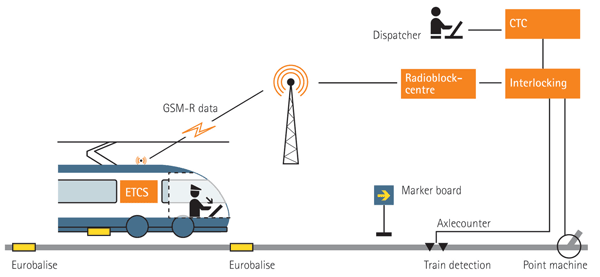

Figure 1: ERTMS Level 1 concept
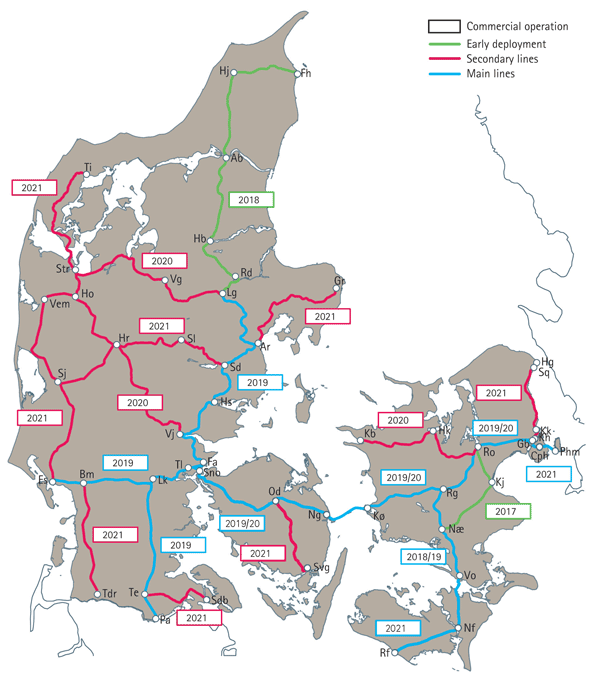

Figure 2: ERTMS Level 2 deployment map
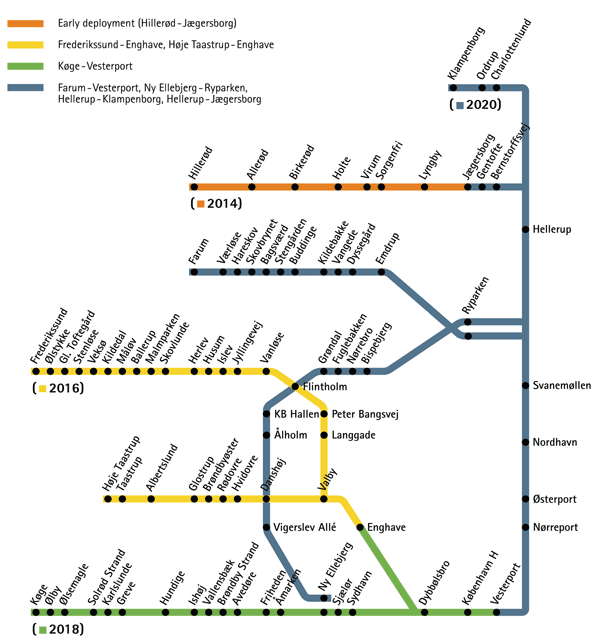

Figure 3: S-train signalling system deployment
Stay Connected with Global Railway Review — Subscribe for Free!
Get exclusive access to the latest rail industry insights from Global Railway Review — all tailored to your interests.
✅ Expert-Led Webinars – Gain insights from global industry leaders
✅ Weekly News & Reports – Rail project updates, thought leadership, and exclusive interviews
✅ Partner Innovations – Discover cutting-edge rail technologies
✅ Print/Digital Magazine – Enjoy two in-depth issues per year, packed with expert content
Choose the updates that matter most to you. Sign up now to stay informed, inspired, and connected — all for free!
Thank you for being part of our community. Let’s keep shaping the future of rail together!
Issue
Related topics
European Rail Traffic Management System (ERTMS), European Train Control System (ETCS), Global System for Mobile Communications – Railway (GSM-R), Signalling, Control & Communications




